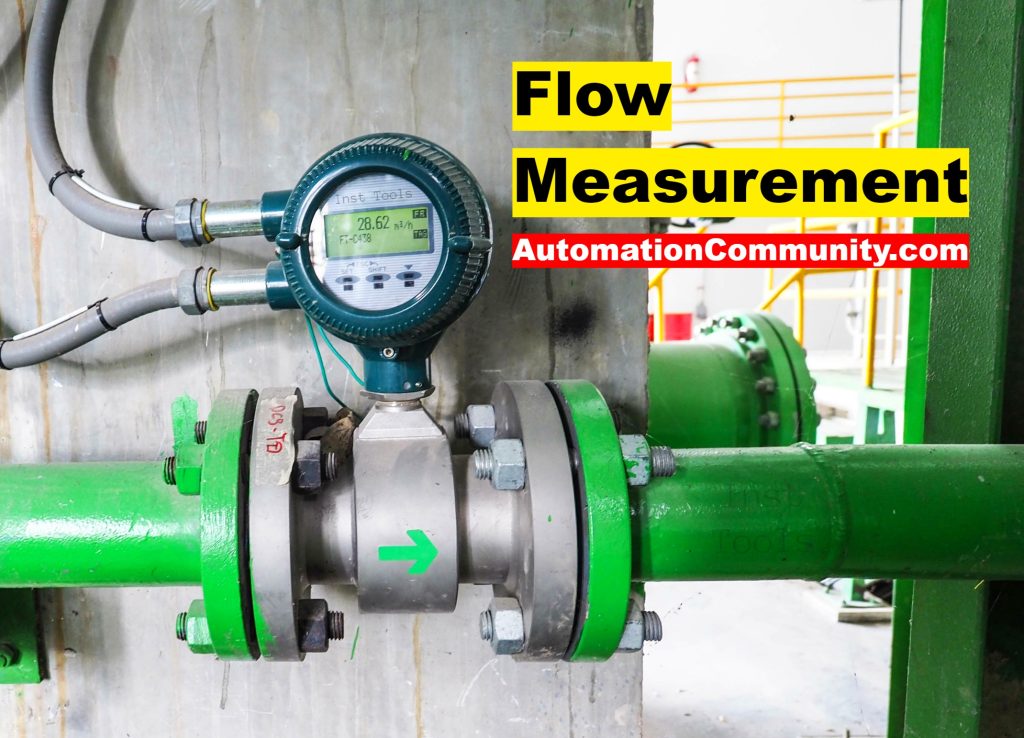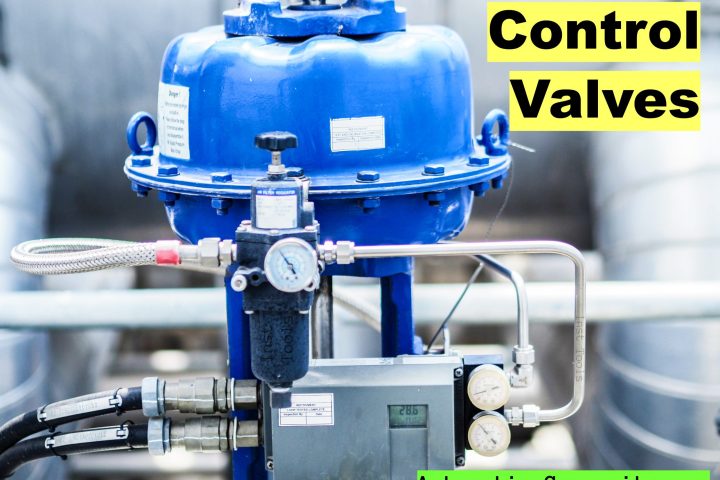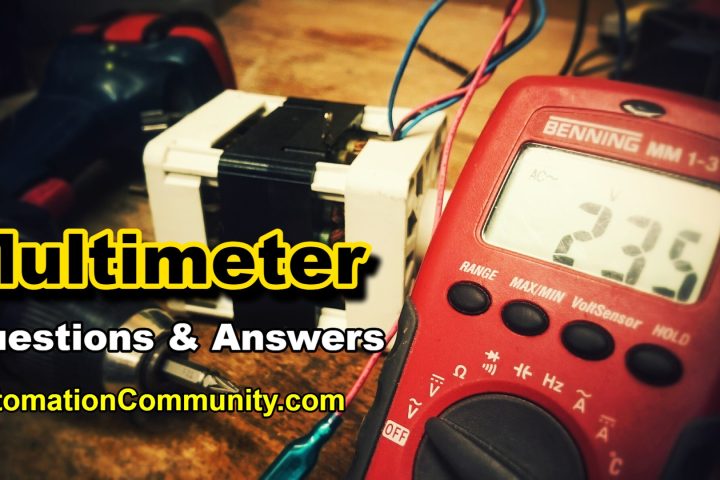Flow Measurement Objective Questions and Answers
Looking to test your knowledge of flow measurement? Instrumentation engineers must try these multiple-choice questions and answers. This collection of unique MCQs covers a range of topics related to flow measurement, from basic principles to common industrial applications.
Flow Measurement Objective Questions and Answers

Whether you’re an instrumentation engineer or just curious about the topic, these questions are sure to provide a challenging and informative quiz. So, let’s test your flow measurement knowledge.
What is the definition of flow rate?
a) The amount of fluid flowing per unit time
b) The amount of fluid stored in a container
c) The amount of pressure in a fluid
d) The amount of fluid velocity
Answer: a) The amount of fluid flowing per unit time
Explanation: Flow rate is defined as the amount of fluid that flows through a given area per unit time. It is typically measured in units of volume per unit time, such as gallons per minute or cubic meters per second.
What is the difference between mass flow rate and volumetric flow rate?
a) Mass flow rate is measured in units of mass per unit time, while volumetric flow rate is measured in units of volume per unit time
b) Mass flow rate is independent of the fluid density, while volumetric flow rate depends on the fluid density
c) Mass flow rate is typically used for liquids, while volumetric flow rate is typically used for gases
d) Both a and b
Answer: d) Both a and b
Explanation: Mass flow rate is a measure of the amount of mass that flows through a given area per unit time, while volumetric flow rate is a measure of the amount of volume that flows through a given area per unit time. Mass flow rate is independent of the fluid density, while volumetric flow rate depends on the fluid density.
What is the principle of operation for a turbine flow meter?
a) The pressure drop across an obstruction is proportional to the flow rate
b) The frequency of rotation of a turbine blade is proportional to the flow rate
c) The change in electrical resistance of a conductor is proportional to the flow rate
d) The change in magnetic field strength is proportional to the flow rate
Answer: b) The frequency of rotation of a turbine blade is proportional to the flow rate
Explanation: In a turbine flow meter, a turbine with multiple blades is placed in the path of the fluid flow. The blades are designed to rotate in response to the fluid flow, and the frequency of rotation is proportional to the flow rate.
Which flow measurement technique is based on the principle of fluid displacement?
a) Electromagnetic flow meter
b) Positive displacement flow meter
c) Ultrasonic flow meter
d) Coriolis flow meter
Answer: b) Positive displacement flow meter
Explanation: Positive displacement flow meters measure fluid flow by dividing the fluid into fixed, known volumes and counting the number of times these volumes are displaced to measure the flow rate.
What is the term for the ratio of the actual flow rate to the maximum rated flow rate of a flow meter?
a) Repeatability
b) Accuracy
c) Linearity
d) Turndown ratio
Answer: d) Turndown ratio
Explanation: Turndown ratio is the ratio of the actual flow rate to the maximum rated flow rate of a flow meter. It is an important factor to consider when selecting a flow meter, as it indicates the range over which the meter can accurately measure flow.
Which flow meter technology is based on the principle of measuring the velocity of a fluid at one or more points in a pipe?
a) Magnetic flow meter
b) Ultrasonic flow meter
c) Differential pressure flow meter
d) Thermal flow meter
Answer: b) Ultrasonic flow meter
Explanation: Ultrasonic flow meters use sound waves to measure the velocity of a fluid at one or more points in a pipe. By measuring the time it takes for the sound waves to travel upstream and downstream, the flow rate can be calculated.
Which flow measurement technique is based on the principle of measuring the pressure drop across a flow obstruction?
a) Positive displacement flow meter
b) Vortex flow meter
c) Turbine flow meter
d) Differential pressure flow meter
Answer: d) Differential pressure flow meter
Explanation: Differential pressure flow meters work by measuring the pressure drop across a flow obstruction in a pipe, such as an orifice plate, venturi tube, or flow nozzle. By measuring the pressure difference between two points in the pipe, the flow rate can be calculated.
Which of the following flow measurement devices operates based on the principle of Bernoulli’s equation?
a. Coriolis flow meter
b. Venturi meter
c. Magnetic flow meter
d. Ultrasonic flow meter
Answer: b. Venturi meter
Explanation: The Venturi meter operates on the principle of Bernoulli’s equation, which states that as the velocity of fluid increases, the pressure decreases.
Which of the following flow measurement devices is commonly used to measure the flow of high-viscosity fluids?
a. Coriolis flow meter
b. Turbine flow meter
c. Positive displacement flow meter
d. Vortex flow meter
Answer: c. Positive displacement flow meter
Explanation: Positive displacement flow meters are ideal for measuring the flow of high-viscosity fluids such as oil, syrup, and honey.
Which of the following flow measurement devices is suitable for measuring the flow rate of corrosive fluids?
a. Magnetic flow meter
b. Turbine flow meter
c. Vortex flow meter
d. Thermal flow meter
Answer: a. Magnetic flow meter
Explanation: Magnetic flow meters are made of non-corrosive materials such as stainless steel, making them suitable for measuring the flow rate of corrosive fluids.
Which of the following flow measurement devices uses the principle of Faraday’s law of electromagnetic induction?
a. Coriolis flow meter
b. Turbine flow meter
c. Magnetic flow meter
d. Vortex flow meter
Answer: c. Magnetic flow meter
Explanation: Magnetic flow meters use the principle of Faraday’s law of electromagnetic induction to measure the flow rate of conductive fluids.
Which of the following flow measurement devices is suitable for measuring the flow rate of dirty fluids?
a. Magnetic flow meter
b. Turbine flow meter
c. Vortex flow meter
d. Thermal flow meter
Answer: b. Turbine flow meter
Explanation: Turbine flow meters are suitable for measuring the flow rate of dirty fluids as they have no moving parts that can be clogged.
Which of the following flow measurement devices can measure both flow rate and fluid density?
a. Coriolis flow meter
b. Turbine flow meter
c. Positive displacement flow meter
d. Vortex flow meter
Answer: a. Coriolis flow meter
Explanation: Coriolis flow meters can measure both flow rate and fluid density, making them ideal for applications where both parameters are important.
Which flow meter uses the principle of a rotating paddle?
a) Turbine flow meter
b) Positive displacement flow meter
c) Vortex flow meter
d) Paddlewheel flow meter
Answer: d) Paddlewheel flow meter
Explanation: The paddlewheel flow meter operates based on the principle of a rotating paddle or wheel that is placed perpendicular to the flow direction. As the fluid passes through the pipe, the paddle is rotated, and the speed of rotation is proportional to the flow rate. The sensor attached to the paddle detects the rotation and provides an output signal proportional to the flow rate.
Which of the following flow meters is not a type of differential pressure flow meter?
a) Orifice flow meter
b) Venturi flow meter
c) Electromagnetic flow meter
d) Pitot tube flow meter
Answer: c) Electromagnetic flow meter
Explanation: Orifice, Venturi, and Pitot tube flow meters are examples of differential pressure flow meters. They work based on the principle that the pressure drop across a restriction in the flow path is proportional to the square of the flow rate. Electromagnetic flow meters, on the other hand, operate based on Faraday’s law of electromagnetic induction and do not require any obstruction in the flow path.
Which of the following flow meters is most suitable for measuring the flow rate of gas streams?
a) Positive displacement flow meter
b) Thermal flow meter
c) Coriolis flow meter
d) Ultrasonic flow meter
Answer: b) Thermal flow meter
Explanation: Thermal flow meters are most suitable for measuring the flow rate of gas streams. They work based on the principle that the rate of heat transfer from a heated element to the flowing fluid is proportional to the mass flow rate. The heated element can be a thermistor, RTD, or a thin-film heater. Positive displacement, Coriolis, and Ultrasonic flow meters are better suited for measuring the flow rate of liquids.
Which of the following flow measurement methods is based on the principle of fluid momentum?
a) Differential pressure flow measurement
b) Turbine flow measurement
c) Electromagnetic flow measurement
d) Ultrasonic flow measurement
Answer: a) Differential pressure flow measurement
Explanation: Differential pressure flow measurement is based on the principle of fluid momentum. It involves measuring the pressure drop across a constriction in the pipe to determine the flow rate.
Which of the following flow measurement methods is best suited for measuring low flow rates?
a) Differential pressure flow measurement
b) Positive displacement flow measurement
c) Turbine flow measurement
d) Ultrasonic flow measurement
Answer: b) Positive displacement flow measurement
Explanation: Positive displacement flow measurement is best suited for measuring low flow rates because it directly measures the volume of fluid passing through the flowmeter.
Which of the following flow measurement methods requires a fluid with high electrical conductivity?
a) Differential pressure flow measurement
b) Positive displacement flow measurement
c) Turbine flow measurement
d) Electromagnetic flow measurement
Answer: d) Electromagnetic flow measurement
Explanation: Electromagnetic flow measurement requires a fluid with high electrical conductivity to generate a measurable voltage signal across the electrodes.
Which of the following flow measurement methods is based on the principle of the Doppler effect?
a) Differential pressure flow measurement
b) Positive displacement flow measurement
c) Turbine flow measurement
d) Ultrasonic flow measurement
Answer: d) Ultrasonic flow measurement
Explanation: Ultrasonic flow measurement is based on the principle of the Doppler effect. It involves measuring the frequency shift of sound waves reflected off particles in the flow stream to determine the flow rate.
Which of the following flow measurement methods is best suited for measuring the flow rate of slurries or non-Newtonian fluids?
a) Differential pressure flow measurement
b) Positive displacement flow measurement
c) Turbine flow measurement
d) Electromagnetic flow measurement
Answer: b) Positive displacement flow measurement
Explanation: Positive displacement flow measurement is best suited for measuring the flow rate of slurries or non-Newtonian fluids because it directly measures the volume of fluid passing through the flowmeter.
Which of the following is not a type of flowmeter?
a) Turbine flowmeter
b) Venturi flowmeter
c) Thermocouple
d) Electromagnetic flowmeter
Answer: c) Thermocouple
Explanation: Thermocouples are used to measure temperature, not flow.
Which of the following flowmeters is known for its high accuracy and reliability?
a) Positive displacement flowmeter
b) Vortex flowmeter
c) Magnetic flowmeter
d) Thermal flowmeter
Answer: c) Magnetic flowmeter
Explanation: Magnetic flowmeters are highly accurate and reliable due to their non-intrusive design and lack of moving parts.
Which of the following is not a type of DP flowmeter?
a) Orifice flowmeter
b) Venturi flowmeter
c) Pitot tube flowmeter
d) Turbine flowmeter
Answer: d) Turbine flowmeter
Explanation: Turbine flowmeters do not rely on differential pressure to measure flow.
Which of the following is not a fluid property that affects flow measurement?
a) Density
b) Viscosity
c) Velocity
d) Pressure
Answer: d) Pressure
Explanation: Pressure is not a fluid property that affects flow measurement. However, it can affect the accuracy of certain flow measurement devices.
Which of the following flowmeters is known for its high turndown ratio?
a) Orifice flowmeter
b) Turbine flowmeter
c) Magnetic flowmeter
d) Vortex flowmeter
Answer: d) Vortex flowmeter
Explanation: Vortex flowmeters have a high turndown ratio, meaning they can accurately measure flow over a wide range of flow rates.
Which of the following flow meters is based on the principle of fluid acceleration?
a) Turbine flow meter
b) Orifice plate
c) Magnetic flow meter
d) Ultrasonic flow meter
Answer: b) Orifice plate
Explanation: Orifice plates use the principle of fluid acceleration to measure the flow rate of a fluid. They consist of a plate with a hole in it placed in the fluid flow. The pressure difference across the hole is proportional to the fluid flow rate.
Which of the following flow meters can measure the flow rate of slurries and abrasive fluids?
a) Magnetic flow meter
b) Ultrasonic flow meter
c) Electromagnetic flow meter
d) Coriolis flow meter
Answer: a) Magnetic flow meter
Explanation: Magnetic flow meters can measure the flow rate of slurries and abrasive fluids as they do not have any moving parts that can be damaged by the fluid. They use electrodes and a magnetic field to measure the velocity of the fluid.
Which of the following flow meters is based on the principle of measuring the change in frequency of sound waves?
A) Turbine meter
B) Magnetic flow meter
C) Coriolis flow meter
D) Ultrasonic flow meter
Answer: D
Explanation: Ultrasonic flow meters use sound waves to determine the velocity of fluid flow. The change in frequency of the sound waves is used to determine the flow rate.
Which of the following flow meters is not a volumetric flow meter?
A) Turbine flow meter
B) Vortex flow meter
C) Magnetic flow meter
D) Coriolis flow meter
Answer: D
Explanation: Coriolis flow meters are not volumetric flow meters because they measure mass flow rate rather than volume flow rate.
Which of the following flow meters is based on the principle of measuring the change in the angular velocity of a fluid?
A) Turbine flow meter
B) Vortex flow meter
C) Magnetic flow meter
D) Coriolis flow meter
Answer: B
Explanation: Vortex flow meters are based on the principle of measuring the change in the angular velocity of a fluid.
Which of the following flow measurement technologies is based on the principle of heat transfer?
a. Magnetic flowmeter
b. Coriolis flowmeter
c. Thermal flowmeter
d. Ultrasonic flowmeter
Answer: c. Thermal flowmeter
Explanation: Thermal flowmeters measure the rate of heat transfer from a heated element to the fluid flowing past it. As the fluid flows, it carries heat away from the element, reducing its temperature. By measuring the temperature difference between the heated element and the fluid, the flow rate can be calculated.
Read Next:














